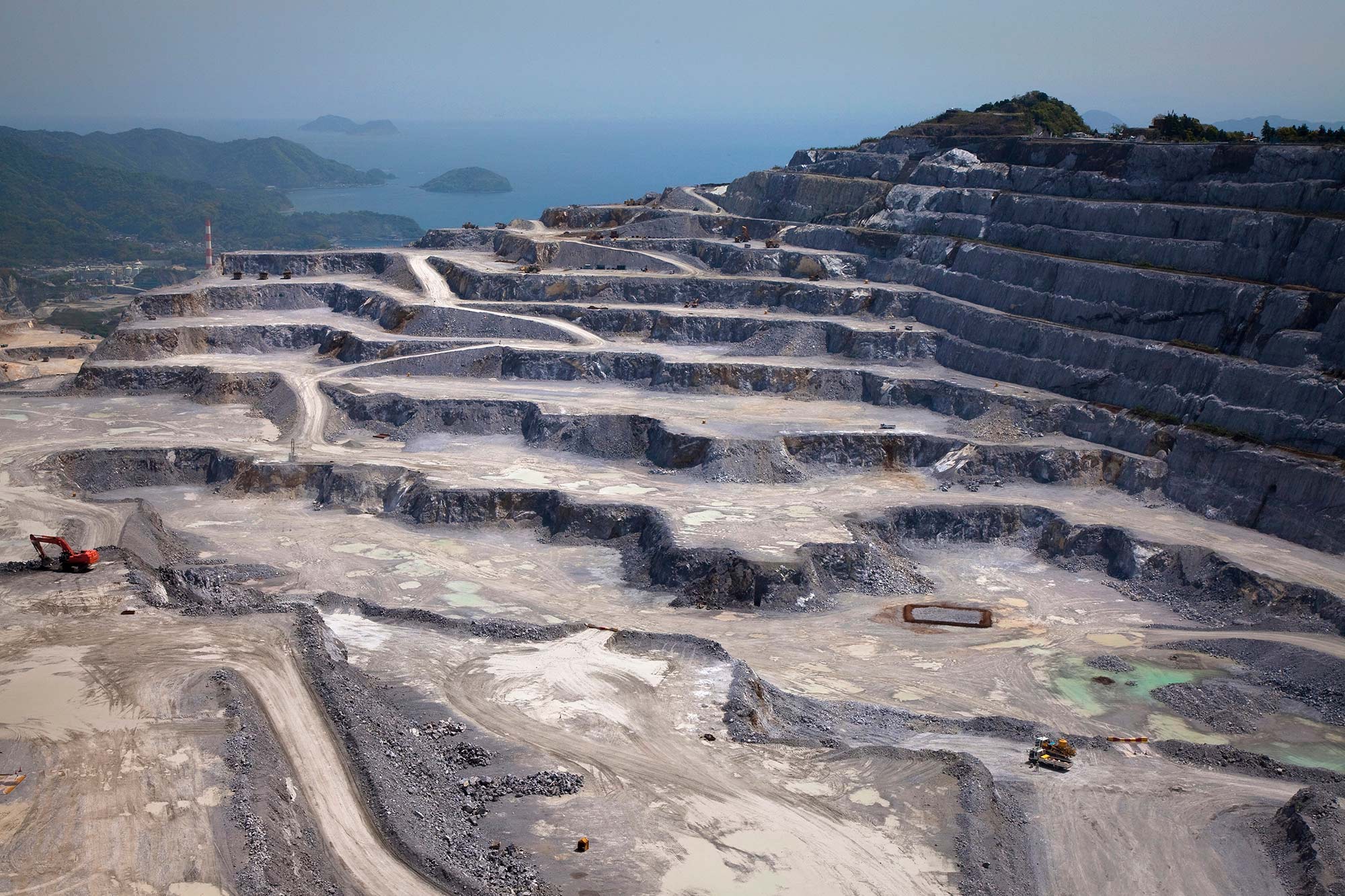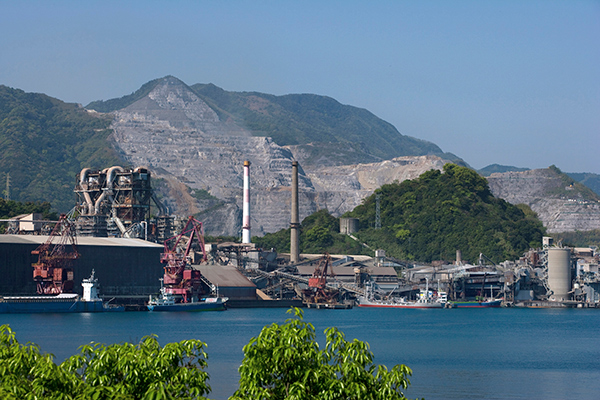

- Kennan Area
- Industry・Industrial Heritage
Lime Mine of Tsukumi
Photography/TAKEUCHI Yasunori
Largest Production in Japan
Driving on National Route 217 from Usuki through a tunnel to enter Tsukumi, there will be a limestone mining site with a white cliff in front of you. The Tsukumi Interchange on the Higashi Kyushu Expressway is the ruins of mountains that vanished due to mining. The former is Mount Gomagara, and the latter is Mount Suishou. They were named thusly because the limestone exposure looked like a pattern on the sesame stalk (“Goma” means sesame, “gara” is patterns in Japanese), and the limestones in the cave looked like crystals (“Suishou” is crystal in Japanese).
Although the mountain does not look like one, people used to give a nickname “Tsukumi Fuji” (for Mount Fuji) to Mount Gomagara. Mount Suishou used to be called “Mount Mito (the Emperor’s mountain)” as well, where the legend says the Empror Jimmu who was going east for battles in the Bungo Channel stopped by and dedicated mandarin oranges. However, the mining has progressed and they both look nothing like what they used to be.
Limestone was made on the seabed near the equator in the central part of the Pacific Ocean. It was created by the precipitation of foraminifers, coral reefs, lime algae and such about 300 million years ago, and approached closer to the Asia continent with the plate moving. The ancient Kyushu is said to have been composed of two islands, and the core of the northern island is Hiraodai, and the southern island is the karst of Tsukumi. With ocean in between, the same goes for Akiyoshidai of Yamaguchi prefecture and Nanyo karst of Shikoku region.
The limestone stratum of Tsukumi continues inland for approximately 20 kilometers, which reaches further into Bungo Ono. Many limestone caves are seen, such as Kariu and Onagara in the south of the mountain range, and Furen and Inazumi in the north, as well as various places with “white” in their names such as Hakusan (white mountain) and Shiratani (white valley).
It was during the Edo period when the limestone started to be treated as products. In Usuki Kokagami, they said the Usuki clan placed the Lime Mining Office in 1862, but with the work of Matahei Yakiishi and various other records, it seems the origin of lime burning goes back nearly a century further.
Into the modern days, with the rise of the cement industry, private sectors started the mining in full scale. The limestone in Tsukumi is high in purity, and the superior mine boasts the largest production volume in Japan today. With the estimated deposit amount of 4.5 billion tons, it is expected to continue its lead in the future.

There are cement industry plants lining along the sea.

